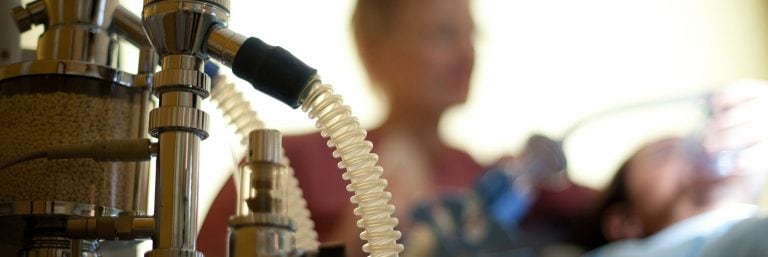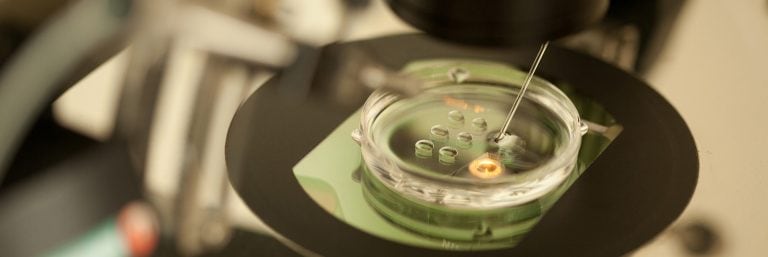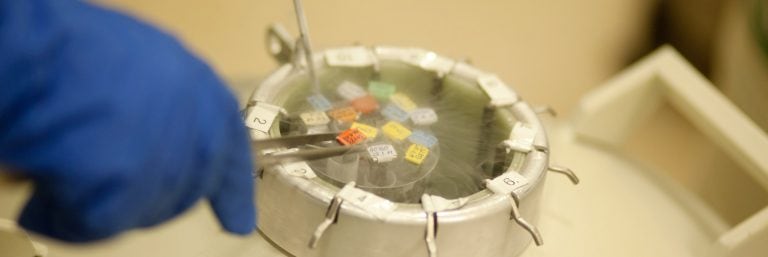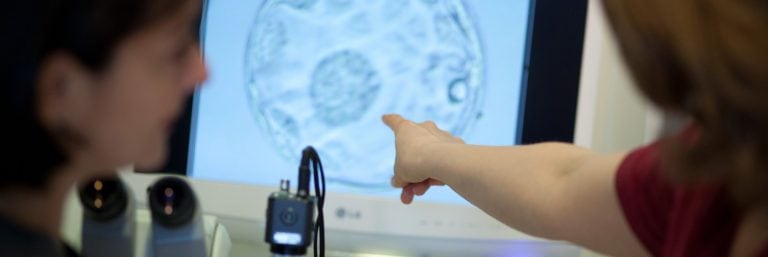Hormone treatment
If the hormone examinations carried out (if necessary after a further check) have revealed a noteworthy hormone disorder, this can be treated specifically. Of course, different hormone disorders can occur at the same time, so that occasionally several drugs have to be taken in combination.
Some remarks on the main hormonal disorders:
- Hypothyroidism
- Hyperprolactinaemia
- PCO syndrome
- Luteal insufficiency
- Thyroid disease
Hypothyroidism
An underactive thyroid gland (hypothyroidism) is found, in. 10-20 % of infertility patients (also in men!). It is not uncommon to find a so-called “latent hypothyroidism”, which does not cause any physical symptoms, but can already sensitively disturb the maturation of the follicle (ovarian follicle) and contribute to a so-called luteal insufficiency (corpus luteum insufficiency).
Therapy
Even low doses of thyroid hormone can solve your cycle problem, and ovulation will occur again on the 13th/14th day of the cycle.
Hyperprolactinaemia
If the pituitary gland produces too much prolactin (PRL), it is usually a case of overproduction (also stress-intensified) (hyperprolactinaemia). Less frequent are the so-called thyroid adenomas, in which the PRL values are usually extremely high. These are benign growths which, depending on their size, can even damage the optic nerve. Usually, such hyperprolactinaemias are treated very effectively with prolactin lowering drugs. Cycles and ovulations become regular again.
In case of very high prolactin levels, a pituitary tumor, which is usually a benign adenoma, must be ruled out by CT (computed tomography) or MRI (magnetic resonance imaging).
Therapy
Prolactin lowering medication.
Hyperandrogenaemia (excess of male hormone levels)
The overproduction of male hormones, hyperandrogenemia, can also have a major impact on the delicate hormonal structure of the female cycle. If it is of adrenal origin (adrenal cortex) it can be treated with cortisone. A very common cause of hyperandrogenemia, but also of hyperandrogenism (increased peripheral effects of normal androgen levels – such as increased hair growth in areas that are unusual for women, acne) is increased body weight. In the fatty tissue from estrogen – androgen (male hormone) is produced, which hinders the cyclic processes. Therefore it is highly recommended to reduce the body weight (diet, sport). The often parallel PCO syndrome (Poly-Cystische-Ovar) intensifies the symptoms.
Therapy
Ovulation (ovulation) can often be achieved either by targeted androgen reduction through the administration of cortisone or by stimulation with clomiphene tablets, but hormone injection therapy can follow.
PCO syndrome (poly-cystic ovaries)
PCO syndrome is a disease characterized by cycle disorders, absence of ovulation, hyperandrogenemia (excess of male hormones), hyperandrogenism (signs of androgen elevation without elevation of androgens in the blood). The “classic PCO ovaries” in the ultrasound image are nowadays not a mandatory part of the diagnosis of PCO syndrome.
If PCO syndrome is accompanied by impaired glucose tolerance (also insulin resistance), the pancreas pumps high amounts of insulin into the bloodstream, which has unfavorable effects at various sites (brain, ovaries, liver).
Therapy
The cycle can be corrected by administering a so-called “insulin sensitizer” (metformin) for several months. Often, women with PCO syndrome are somewhat heavier, which supports the cycle disorder. In the fatty tissue androgen (male hormone) is produced from estrogen, which, together with high insulin, interferes with the cyclic processes. Therefore, it is highly recommended to reduce the body weight, in addition to taking metformin (diet, sports).
Corpus luteum insufficiency (weakness of the corpus luteum)
After ovulation, the follicle (egg vesicle) becomes the so-called corpus luteum through vascularization and fat storage.
Various hormonal disorders are often associated with a so-called corpus luteum insufficiency (CLI), i.e. the weakness of the corpus luteum, so that additional treatment should also be given here. In this case, not only corpus luteum hormones are used, but rather the root of the problem must be addressed. If the quality of the first half of the cycle is limited, this also affects the time after ovulation, i.e. the luteal phase.
Therapy
Classically, clomiphene is used to stimulate the ovaries; if this is not successful, FSH (follicle-stimulating hormone) can be given.








